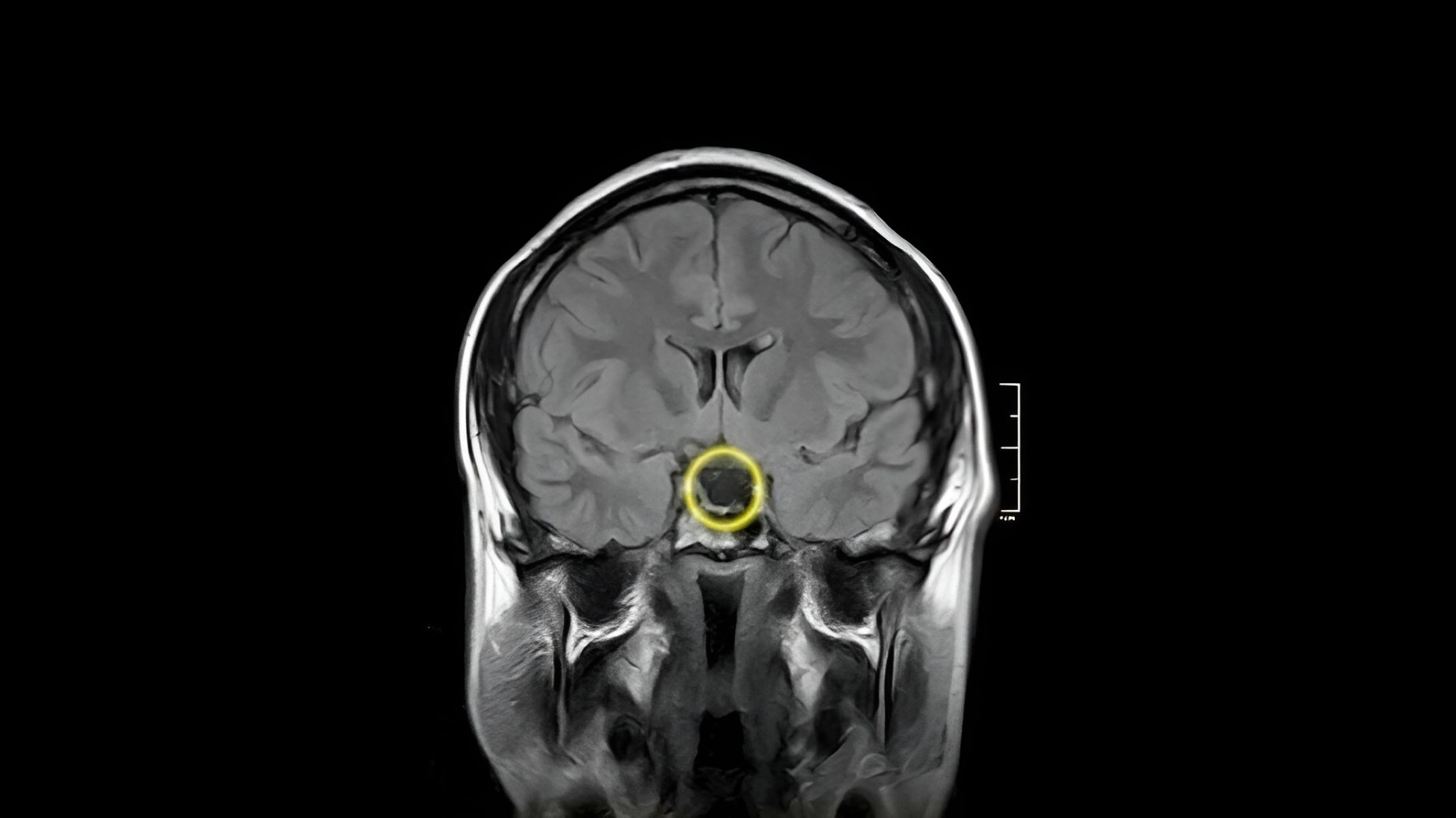
Sheehan's Syndrome is a rare condition that affects women who experience severe blood loss during or after childbirth. This significant blood loss can damage the pituitary gland, leading to a deficiency in one or more of the hormones it produces. Symptoms of Sheehan's Syndrome can vary widely, including fatigue, weight loss, and difficulty breastfeeding. Diagnosis often involves blood tests to check hormone levels and imaging studies to assess the pituitary gland. Treatment typically includes hormone replacement therapy to manage the deficiencies. Understanding Sheehan's Syndrome is crucial for early detection and effective management, ensuring better health outcomes for affected women.
Key Takeaways:
- Sheehan's Syndrome is a rare condition caused by severe blood loss during childbirth, leading to hormonal deficiencies. Early recognition and hormone replacement therapy are crucial for managing symptoms and improving quality of life.
- Preventing Sheehan's Syndrome involves proper childbirth management and raising awareness. Research and advancements aim to develop new treatments and improve diagnosis, offering hope for those affected by this condition.
What is Sheehan's Syndrome?
Sheehan's Syndrome is a rare condition that affects women who experience severe blood loss during or after childbirth. This blood loss can damage the pituitary gland, leading to a deficiency in one or more of the hormones it produces. Here are some fascinating facts about this condition:
- Named after British pathologist Harold Leeming Sheehan, who first described it in 1937.
- Often referred to as postpartum hypopituitarism.
- The pituitary gland, also known as the "master gland," controls various hormonal functions in the body.
- Severe blood loss during childbirth can cause the pituitary gland to lose its blood supply, leading to tissue death.
- Symptoms may not appear immediately and can develop gradually over months or years.
Symptoms of Sheehan's Syndrome
Recognizing the symptoms of Sheehan's Syndrome is crucial for timely diagnosis and treatment. Here are some common signs to watch for:
- Fatigue and weakness are often the first symptoms noticed.
- Inability to produce breast milk (lactation failure) is a hallmark sign.
- Menstrual irregularities or absence of menstruation (amenorrhea) can occur.
- Low blood pressure and dizziness are common due to adrenal insufficiency.
- Weight gain or difficulty losing weight may be experienced.
Diagnosis and Testing
Diagnosing Sheehan's Syndrome involves a series of tests and evaluations. Here are some key points about the diagnostic process:
- Blood tests are used to measure hormone levels.
- MRI or CT scans can help visualize the pituitary gland.
- Stimulation tests may be conducted to assess pituitary function.
- A detailed medical history, including childbirth complications, is essential.
- Endocrinologists are specialists who typically diagnose and treat this condition.
Treatment Options
Treatment for Sheehan's Syndrome focuses on hormone replacement therapy. Here are some treatment facts:
- Lifelong hormone replacement therapy is often required.
- Corticosteroids are used to replace adrenal hormones.
- Thyroid hormone replacement is necessary for hypothyroidism.
- Estrogen and progesterone therapy may be needed for menstrual irregularities.
- Growth hormone replacement is sometimes prescribed.
Impact on Quality of Life
Living with Sheehan's Syndrome can significantly impact a person's quality of life. Here are some ways it affects daily living:
- Chronic fatigue can make everyday tasks challenging.
- Hormonal imbalances can lead to mood swings and depression.
- Infertility or difficulty conceiving may be a concern.
- Regular medical appointments and monitoring are required.
- Support from family and healthcare providers is crucial.
Prevention and Awareness
Preventing Sheehan's Syndrome involves addressing risk factors and raising awareness. Here are some preventive measures:
- Proper management of childbirth to minimize blood loss.
- Early intervention in cases of severe postpartum hemorrhage.
- Educating healthcare providers about the condition.
- Raising awareness among expectant mothers.
- Ensuring access to quality maternal healthcare.
Historical Cases and Research
Sheehan's Syndrome has a rich history and ongoing research efforts. Here are some interesting historical and research facts:
- The first documented case was in 1937 by Dr. Harold Sheehan.
- Research continues to explore new treatment options.
- Advances in imaging technology have improved diagnosis.
- Studies are investigating the genetic factors involved.
- Historical cases have provided valuable insights into the condition.
Support and Resources
Support and resources are available for those affected by Sheehan's Syndrome. Here are some helpful resources:
- Patient support groups offer a sense of community.
- Online forums provide a platform for sharing experiences.
- Educational materials are available from endocrine societies.
- Counseling services can help with emotional challenges.
- Healthcare providers can offer guidance and support.
Interesting Facts
Here are some additional interesting facts about Sheehan's Syndrome:
- It is more common in developing countries due to limited access to maternal healthcare.
- The condition can be misdiagnosed as other hormonal disorders.
- Early diagnosis and treatment can significantly improve outcomes.
- Hormone replacement therapy can help manage symptoms effectively.
- Awareness campaigns are helping to reduce the incidence of the condition.
Future Directions
Research and advancements in medical science continue to shape the future of Sheehan's Syndrome. Here are some future directions:
- New hormone replacement therapies are being developed.
- Genetic research may uncover new insights into the condition.
- Improved diagnostic tools are being explored.
- Awareness campaigns aim to reduce the incidence of the condition.
- Ongoing research is focused on improving the quality of life for those affected.
Key Points to Remember
Sheehan's Syndrome, a rare condition, affects women who experience severe blood loss during childbirth. This can lead to pituitary gland damage, causing hormone deficiencies. Symptoms include fatigue, low blood pressure, and difficulty breastfeeding. Diagnosis often involves blood tests and imaging studies. Treatment typically includes hormone replacement therapy to manage symptoms and improve quality of life.
Early diagnosis and treatment are crucial for managing Sheehan's Syndrome effectively. Awareness among healthcare providers and patients can lead to better outcomes. If you or someone you know shows symptoms, seeking medical advice promptly is essential.
Understanding Sheehan's Syndrome helps in recognizing its impact and the importance of timely intervention. Stay informed, and don't hesitate to consult healthcare professionals if you have concerns. Knowledge and proactive care can make a significant difference in managing this condition.
Frequently Asked Questions
Was this page helpful?
Our commitment to delivering trustworthy and engaging content is at the heart of what we do. Each fact on our site is contributed by real users like you, bringing a wealth of diverse insights and information. To ensure the highest standards of accuracy and reliability, our dedicated editors meticulously review each submission. This process guarantees that the facts we share are not only fascinating but also credible. Trust in our commitment to quality and authenticity as you explore and learn with us.


